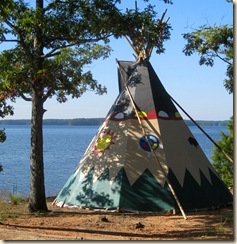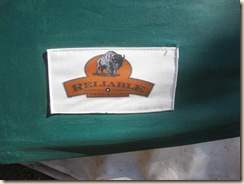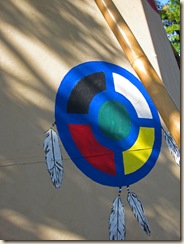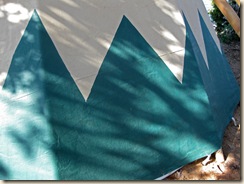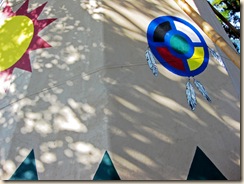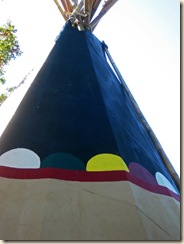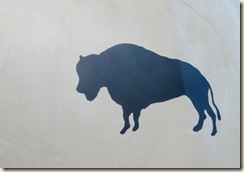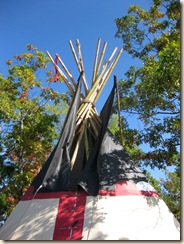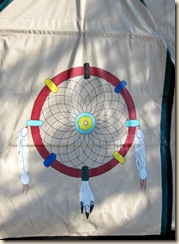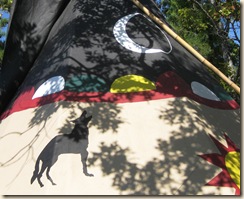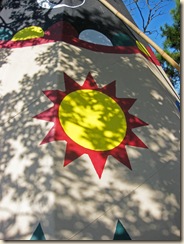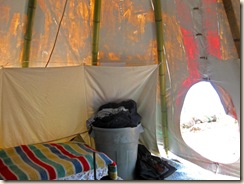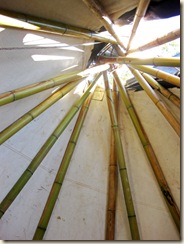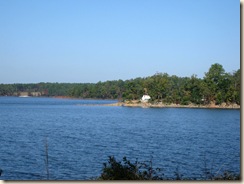Table of Contents for This Series
- Introduction, trip over, and KOA Campground at Cherokee, NC.
- Breakfast at the Whistlestop Cafe, Dillsboro, NC.
- Scenes from the Pottery Festival
- Interview with Travis Berning, a Festival Organizer.
The opportunity to visit dozens of nearby interesting small towns is one advantage of living in the Carolinas. Both South and North Carolina are chuck-full of them. Many within driving distance of Columbia.
Most of those small communities have long and rich histories. Many now have recognized the economic potential of their history, preserved and interpreted. And take some pains to offer it in a way that attracts money-spending visitors.
Dillsboro, in the Smokey Mountains of western North Carolina, is one such community. We visited Dillsboro a decade or so ago specifically to ride its celebrated steam railroad. In addition to its terminal museum and the opportunity to view the steam locomotives up-close, the railroad provided rides through some beautiful Smokey Mountains scenery. Quite an experience.
Even then, Dillsboro offered visitors considerably more than the steam railroad. Especially interesting to us was the community of potters developing there, and the museum-like shops where they offered their wares for sale. We spent some time during that visit looking around, and even bought a piece or two!
It now appears that the steam railroad has moved its base of operations from Dillsboro to a nearby community. Though their excursion trains still run to Dillsboro during the summer months.
As if in compensation, the arts and crafts community of Dillsboro has expanded considerably. One example. For the past five years, potters in and around Dillsboro have joined to sponsor an annual pottery festival. We learned of this event on the internet. Click here for their site.
Rather than staying in one of the many nearby motels, this time we took our little Aliner. With one of us “campophobic,” it’s rare we both travel with the Aliner. So it seemed to me a good idea to make reservations at one of those large commercial campgrounds that offer all imaginable facilities.
The Cherokee/Great Smokies KOA campground in nearby Cherokee, North Carolina, was just such a facility. It’s huge! The largest I’ve ever seen. With hundreds of campsites. These range from small tent sites to those long concrete slabs required to comfortably park huge Class A motorhomes.
I called directly a week or so ago to make the reservation, and to confirm the available facilities. Ms. Victoria answered the reservation line, and was most helpful. She recommended one of the “premium” sites that abutted the creek flowing through the campground. We found the site just as Ms. Victoria had described it.
 The drive to the Cherokee KOA turned into more of an adventure than we expected. The map above shows how simple it should have been.
The drive to the Cherokee KOA turned into more of an adventure than we expected. The map above shows how simple it should have been.
Well, all was routine up through I-26 north. Until we neared the turn-off to I-40 west. Then blinking signs informed us that a major rockslide had closed I-40 in both directions west of the I-26 interchange, and recommended that we continue on north to I-81!
Since the I-81 interchange was quite a ways north it would have taken us considerably out of our way. So we watched for an alternative.
The GPS was little help. Or, more accurately, I didn’t know how to program the GPS to make it abandon its insistence that we plow ahead on I-40 west! I’d also forgotten to bring a hard-copy map that might have helped.
I did remember that Route 19 passed directly through Cherokee, and past the turn north to our campground. So, when a sign indicating Route 19 appeared I took it. Intending to follow 19 through to our turn-off.
Well! Route 19 in western North Carolina is a beautiful road. One I’d recommend to anyone traveling in the area. Unless they happened to be towing a travel trailer. Route 19 winds through spectacular mountain scenery. And a number of the historic small towns mentioned above. Offering an abundance of the natural and social scenery I often describe in this blog.
 But! Route 19 in this part of the Smokey Mountains was not planned as the ideal road along which to pull a travel trailer. Even a small travel trailer! We made it through, fortunately, without incident. Arriving at the town of Cherokee about 90 minutes later than expected. From there it was only minutes to the KOA campground.
But! Route 19 in this part of the Smokey Mountains was not planned as the ideal road along which to pull a travel trailer. Even a small travel trailer! We made it through, fortunately, without incident. Arriving at the town of Cherokee about 90 minutes later than expected. From there it was only minutes to the KOA campground.
Check-in was painless. [I’d confirmed the reservation that morning, after being reminded of the importance of confirming reservations before arrival during my last outing to Hunting Island State Park.] And we drove directly to our site.
On the way we passed the campground’s heavily stocked trout ponds and streams. The Tribal Authorities this time of year stock the streams twice a week with good-sized trout. So those fishing were having great success. Further on we passed a large heated swimming pool and one of those large inflated rubber pillows on which children enjoy jumping. We also noticed that this campground had many more cabins than was usual. They came in several sizes and types. Some right on the bank of the trout stream that flowed behind us.
 Set-up on the large and level concrete pad was simplicity itself. We were done in just a few minutes. Just roll the Aliner back toward the stream, put down the four stabilizer jacks, connect electricity and water. Then raise the roof! Quick set-up and take-down is one of the Aliner’s great advantages. The process usually draws a small crowd of on-lookers.
Set-up on the large and level concrete pad was simplicity itself. We were done in just a few minutes. Just roll the Aliner back toward the stream, put down the four stabilizer jacks, connect electricity and water. Then raise the roof! Quick set-up and take-down is one of the Aliner’s great advantages. The process usually draws a small crowd of on-lookers.
We had dinner out that night, at a nearby restaurant recommended by the KOA folks, and then back to the Aliner to turn in early.
The campground reminded us of a small town, with street names and street lights throughout. No problem finding one’s way around, even at night. Just follow the map!
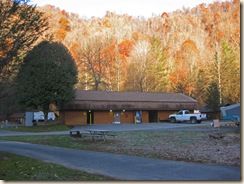 As one expects in such facilities, the bath houses were clean, with plenty of hot water. There were even individual rooms for the toilets and wash basins. The first I’ve seen.
As one expects in such facilities, the bath houses were clean, with plenty of hot water. There were even individual rooms for the toilets and wash basins. The first I’ve seen.
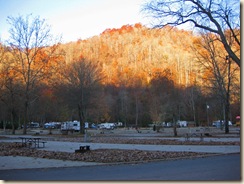 For me, though, the most impressive feature of this huge KOA campground was the views of the surrounding Smokey mountains. They were spectacular in nearly every direction. It was a treat the next morning to watch the sun illuminate the peaks, then down the sides of those mountains. Autumn color was past its prime in this part of the country. Many of the trees had already dropped their leaves. But the sight was still impressive, as you can see in the photo above.
For me, though, the most impressive feature of this huge KOA campground was the views of the surrounding Smokey mountains. They were spectacular in nearly every direction. It was a treat the next morning to watch the sun illuminate the peaks, then down the sides of those mountains. Autumn color was past its prime in this part of the country. Many of the trees had already dropped their leaves. But the sight was still impressive, as you can see in the photo above.
We went to bed looking forward to the short drive from the Cherokee/Smokies KOA to Dillsboro for a late breakfast and a day viewing and discussing pottery.
Click here for Breakfast in Dillsboro.
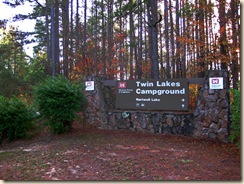 Twin Lakes is one of the several campgrounds the Corps of Engineers maintains on the string of four lakes running from Jocassee in the north to Strom Thurmond [formerly Clark’s Hill] in the south. I’ve been to campgrounds on three of those lakes a number of times, but this is the first time camping on Lake Hartwell.
Twin Lakes is one of the several campgrounds the Corps of Engineers maintains on the string of four lakes running from Jocassee in the north to Strom Thurmond [formerly Clark’s Hill] in the south. I’ve been to campgrounds on three of those lakes a number of times, but this is the first time camping on Lake Hartwell.  An experienced camp host couple was at the gate for check-in.
An experienced camp host couple was at the gate for check-in. 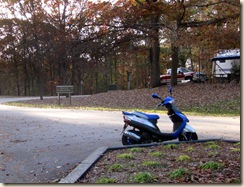 A scooter or golf cart parked near the gatehouse nearly always indicates that the camp hosts are on the ball, and will be an active presence in the campground.
A scooter or golf cart parked near the gatehouse nearly always indicates that the camp hosts are on the ball, and will be an active presence in the campground.  I took the photo above from the gate house, looking up the road into the campground. Just before driving out to look at the boat ramp.
I took the photo above from the gate house, looking up the road into the campground. Just before driving out to look at the boat ramp. 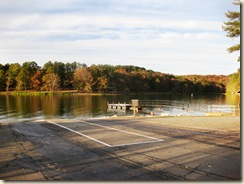 Drive up this road a short distance and turn right to reach the Park’s boat ramp. It, like the rest of the Park, is beautifully maintained. Lots of longish parking spots for vehicles pulling boat trailers. Restroom facilities.
Drive up this road a short distance and turn right to reach the Park’s boat ramp. It, like the rest of the Park, is beautifully maintained. Lots of longish parking spots for vehicles pulling boat trailers. Restroom facilities. 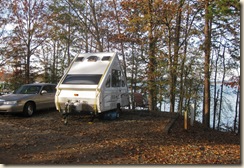 Here’s the Aliner all set up on site # 31. Look at that view from the reading chair! Now, site # 31 is not at all unusual here. Nearly all of the campsites have a lake view as nice as this. Most, better!
Here’s the Aliner all set up on site # 31. Look at that view from the reading chair! Now, site # 31 is not at all unusual here. Nearly all of the campsites have a lake view as nice as this. Most, better! 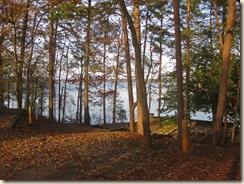 As you see in the photo above, this is a two-level site. With the picnic table, grill, and fire ring all down a flight of steps. An arrangement required by the steep bank to the shore.
As you see in the photo above, this is a two-level site. With the picnic table, grill, and fire ring all down a flight of steps. An arrangement required by the steep bank to the shore. 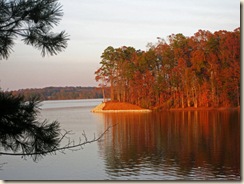 So no direct kayak launches from this site! But the view up the lake is spectacular. It’s worth the drive to the boat ramp.
So no direct kayak launches from this site! But the view up the lake is spectacular. It’s worth the drive to the boat ramp. 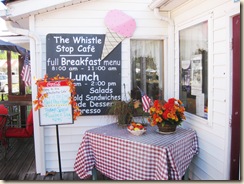

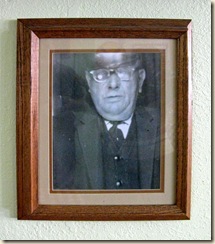 Louis and his wife bought the restaurant a couple of years ago. While the railroad terminal was still in Dillsboro. Hence, “Whistlestop Cafe.” Both he and his wife come from a long line of railroad people.
Louis and his wife bought the restaurant a couple of years ago. While the railroad terminal was still in Dillsboro. Hence, “Whistlestop Cafe.” Both he and his wife come from a long line of railroad people.  When you visit Dillsboro and the Whistle Stop Cafe, take time to look carefully at the photos and paintings on the wall. Lots of interesting material.
When you visit Dillsboro and the Whistle Stop Cafe, take time to look carefully at the photos and paintings on the wall. Lots of interesting material. 
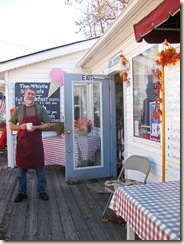

 But! Route 19 in this part of the Smokey Mountains was not planned as the ideal road along which to pull a travel trailer. Even a small travel trailer! We made it through, fortunately, without incident. Arriving at the town of Cherokee about 90 minutes later than expected. From there it was only minutes to the KOA campground.
But! Route 19 in this part of the Smokey Mountains was not planned as the ideal road along which to pull a travel trailer. Even a small travel trailer! We made it through, fortunately, without incident. Arriving at the town of Cherokee about 90 minutes later than expected. From there it was only minutes to the KOA campground. 


